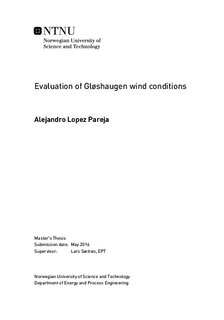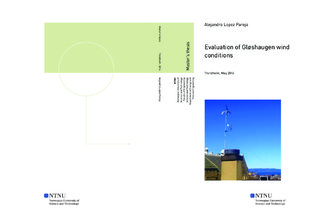| dc.description.abstract | It is very important to know the wind conditions when, for example, designing buildings. In this paper, the results focus on the wind conditions needed to decide if it is interesting and right to deploy some wind turbines at the roofs of Gløshaugen s buildings in order to the university becomes energy self-sufficient; or at least more independent by generating part of its own energy. To do that, a ZephIR 300 Lidar takes wind conditions data that is analyzed and present here. Moreover, an AIR-40 wind turbine is deployed at the roof of one of the Department s buildings. It takes some data such as power output and wind speed. The results show a 6.2 m/s of averaged wind speed, with 225º predominant direction according to both, the Lidar and the weather station located next to the wind turbine. This wind is stronger during winter months and very weak during the summer. The wind turbine has a Cp maximum of 0.35 and a maximum power output of 250 W with a wind speed of 11m/s. After analyzing all costs, the results evidence that it is not economically profitable to deploy wind turbines to save money, unless that the main goal is to depend less from the grid and be greener. | |

